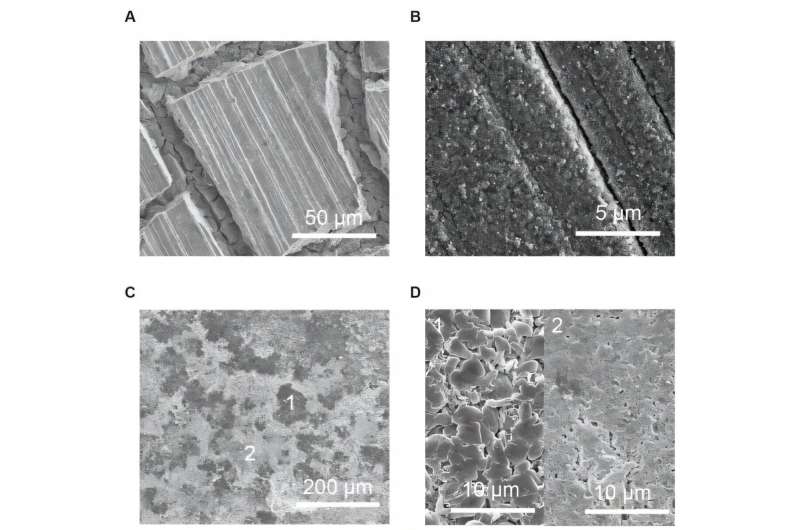Short duration voltage application to silicon anodes shows potential for restoring Li-Si battery capacity
A team of engineers, chemists and materials scientists at Stanford University, has found that applying short duration voltage to some types of anodes in Li–Si batteries, can restore some of their capacity. In their paper published in the journal Science, the group describes how they experimented with batteries by applying an electrical charge to several types of silicon anodes.
Chengbin Jin and Xinyong Tao, both with Zhejiang University of Technology, in China, have published a Perspective piece in the same journal issue outlining the work done by the team.
It is common knowledge that lithium-ion batteries do not last very long. After multiple charge/recharge cycles, the batteries begin to hold less and less charge until they become of little use and replacement becomes necessary. Because of that, some battery makers have begun to look into the possibility of using silicon anodes.
This idea may grow in popularity since the team at Stanford has found that for some types of Li-ion batteries, giving them a five-minute burst of electricity directly to the anode can restore some capacity.
Batteries that have a silicon anode have a higher density than those made using other materials, which increases their capacity. Unfortunately, upon use, some of the silicon begins to fragment, which reduces capacity. This is because the fragmenting creates isolated chunks of silicon that are partly filled with lithium—they are like little islands, unusable for holding charge.
In this new study, the research team found that applying electricity directly to the anode pulled some of the isolated chunks back to the anode, making them able to hold a charge again. After testing anode charging, the researchers tested batteries that had pure silicon anodes. Applying electricity directly to their anodes led to some degree of restored capacity.
During their experiments, the researchers found that the more electricity they applied, the more capacity was restored, but there was a limit. Too much electricity led to degradation of the electrolyte. They also found that varying the length of time that voltage was applied had an impact on restoration of capacity. Eventually, they found that applying four volts for five minutes gave the best result—a 30% increase in capacity.
More information:
Yufei Yang et al, Capacity recovery by transient voltage pulse in silicon-anode batteries, Science (2024). DOI: 10.1126/science.adn1749
Chengbin Jin et al, Electric pulses rejuvenate batteries, Science (2024). DOI: 10.1126/science.ads9691
© 2024 Science X Network
Citation:
Short duration voltage application to silicon anodes shows potential for restoring Li-Si battery capacity (2024, October 21)
retrieved 22 October 2024
from https://techxplore.com/news/2024-10-short-duration-voltage-application-silicon.html
This document is subject to copyright. Apart from any fair dealing for the purpose of private study or research, no
part may be reproduced without the written permission. The content is provided for information purposes only.

Comments are closed